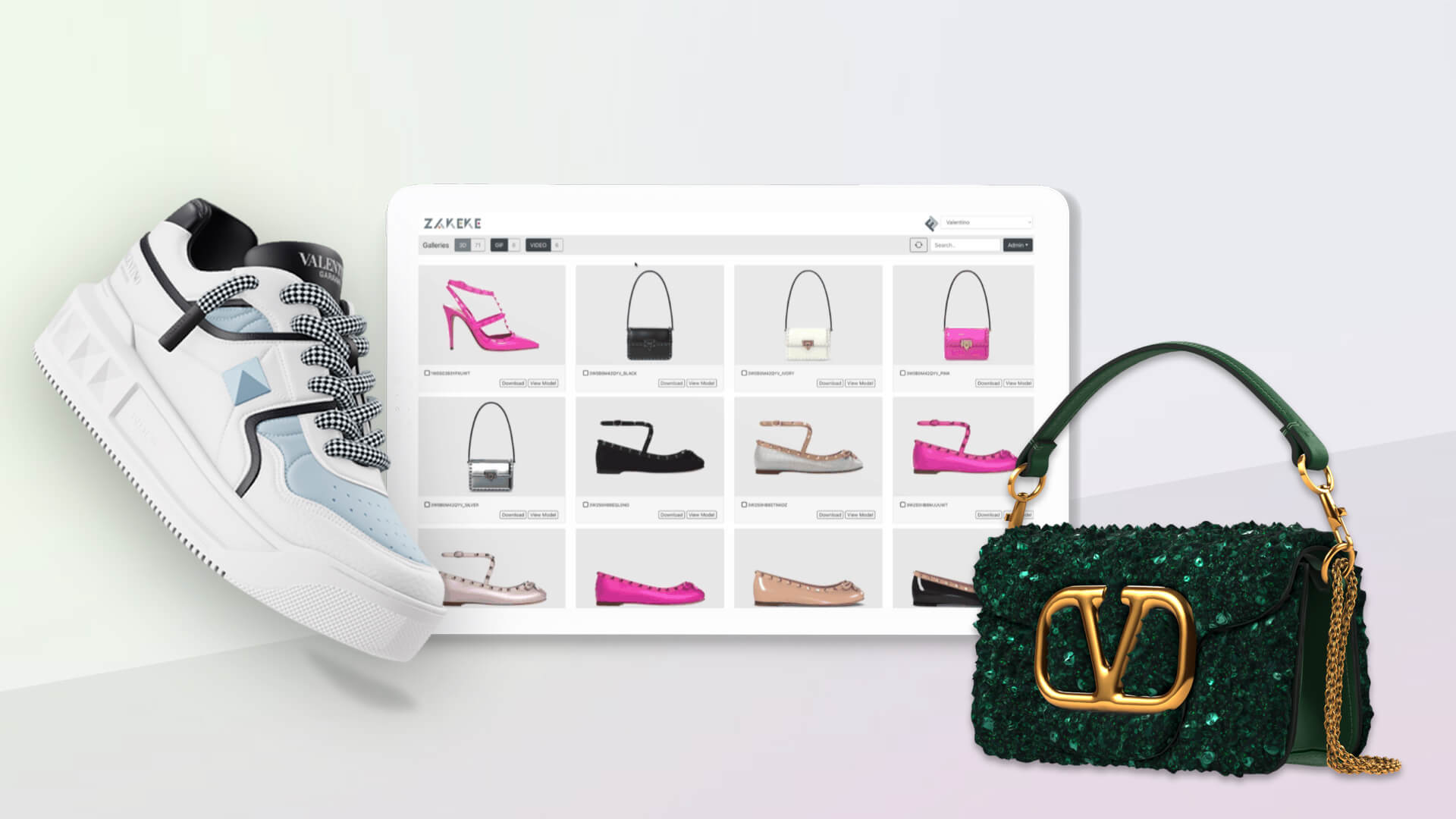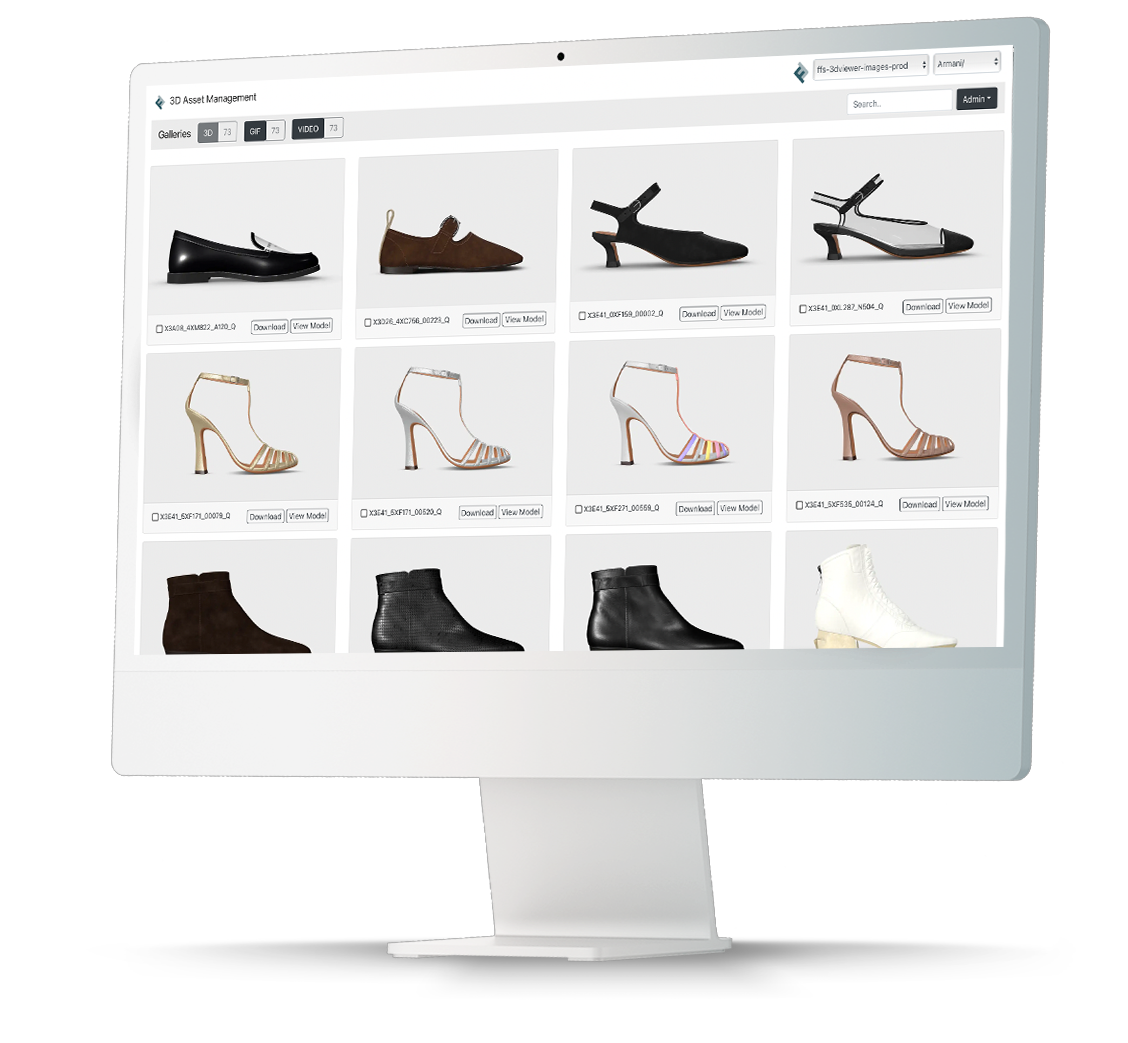In recent years, sustainability has become a crucial focus for businesses across industries. Consumers are demanding products that are not only functional and aesthetically pleasing but also eco-friendly.
3D technology has emerged as a game-changer in sustainable product design. By creating digital renderings rather than physical samples, 3D can slash waste and carbon emissions across design, manufacturing, and shipping.
Talking about eCommerce, digital collections and virtual try-on provide shoppers with more sustainable alternatives to returns and overproduction.
Let’s explore all the pluses of implementing a 3D-centric approach in your company.
Showcasing Your Products in 3D While Saving Costs
3D visualization provides significant benefits for eCommerce brands compared to traditional product photography. Creating a photorealistic 3D model of a garment or accessory is often cheaper than organising high-quality photoshoots.
With 3D brands can cut down on these expenses after the initial investment. Once the 3D models are made, they can be reused and reconfigured for different colours and variations rather than reshooting. Automation and photogrammetry also speed up the 3D process compared to the time-intensive photoshoots required each season or for new styles. For small businesses and startups, the lower cost and scalability of 3D are very appealing and allow them to invest more resources into the product design and quality itself.
Overall, 3D visualisation empowers brands to achieve high-quality, consistent product imagery at a fraction of the cost of traditional photoshoots. The initial investment pays dividends over the long run with reuse potential for years to come. On the other side, for small companies, 3D represents a way to visually compete with big brands without breaking the bank.
Turn Your Catalog into 3D with Zakeke
One of the most promising aspects of 3D technology is the possibility of creating a collection without the need to produce physical samples just for visual marketing purposes. The 3D model is the sample and does not need to be shipped back and forth for approvals and photography. All collaboration can happen digitally, enabling faster design iterations before production. This not only reduces material waste but also saves time and resources.
Zakeke allows you to easily turn images into 3D models (also starting from high poly 3D files or physical items) and create your 3D catalog to offer an immersive, interactive experience that brings your online collections to life. It allows your customers to explore your products in a virtual environment, providing a detailed, 360 view of each product.
This technology not only enhances the shopping experience but also provides valuable insights into your customers’ preferences and behaviours.
It’s a cost-effective solution that can significantly boost your online sales and improve customer engagement.
Streamline Operations While Reducing Returns
Thanks to interactive 3D product visualization, online shoppers can better evaluate the product, assess its fit, look, and feel before adding it to the cart. This leads to more informed buying decisions and fewer returns. Traditional 2D product photos only provide a limited perspective of how an item will actually look. But with 3D models, customers can see any details from all angles.
Retailers that have implemented 3D imagery in their eCommerce stores noticed a significant drop in return rates. Studies have shown they can be lowered by anywhere from 30-40% by using 3D visualization versus standard photos.
Such reduction benefits both the customer and the brand. Customers can shop with more confidence knowing the item will fit properly. This saves them the time and hassle of returning and exchanging items. For retailers, fewer returns mean reduced shipping and operational costs, fewer restocked items and increased inventory turnover. The combined impact is higher sales conversion and improved profit margins.
Lower Environmental Impact Thanks to Virtual Try-On
Transitioning to 3D product visualization is a clear opportunity for eCommerce players to elevate the online shopping experience, and boost efficiency and sustainability. The rich visual information empowers customers to make better purchase decisions, resulting in fewer returns.
Reducing returns not only decreases emissions but also cuts down on waste. Returned inventory often ends up in landfills, whereas 3D visualization helps keep unneeded shipments from being sent out in the first place.
An important role in developing a circular fashion economy is played by virtual try-on. This immersive technology uses 3D models and Augmented Reality to allow online shoppers to see how clothes and accessories will look on them before purchasing.
Rather than relying on static product photos, virtual try-on shows items on a 3D model that simulates the customer’s body shape and proportions. Shoppers can choose from different model types, while the 3D model mimics the movements in real-time for an ultra-realistic visualization.
According to Zurich University of the Arts research, virtual try-on leads to a 40-60% reduction in returns for online fashion retailers and, consequently, to a lower environmental impact. The substantial carbon emissions associated with shipping products back and forth (often ending up in landfills) are also avoided.
Overall, virtual try-on technology is revolutionising the online fashion shopping experience. It provides the fit visualisation customers need to feel confident purchasing remotely. This improves customer satisfaction while cutting costs and waste for retailers.
Conclusion
3D technology on eCommerce provides numerous benefits for both businesses and consumers. By utilising 3D visualization, virtual try-on, and digital inventory, fashion brands can significantly reduce returns, lower environmental impact, and improve the overall customer experience.
With virtual try-on, customers can see how the decided product will look on their body before purchase. This minimises the likelihood of returns and the associated costs and carbon emissions from shipping. Digital inventory also abates waste and emissions by removing the need to produce physical samples.
For businesses, 3D technology streamlines operations, cuts costs, and provides data insights not available with traditional photography. The ability to digitally showcase products allows for limitless configurations and visualizations.
While the adoption of 3D is still in the early stages, innovative fashion brands have already demonstrated their potential for a more sustainable business model. As the technology matures, 3D is poised to become a game-changer to stay competitive in the fashion retail market. Its environmental and business benefits make it an essential component of a future-ready industry.














